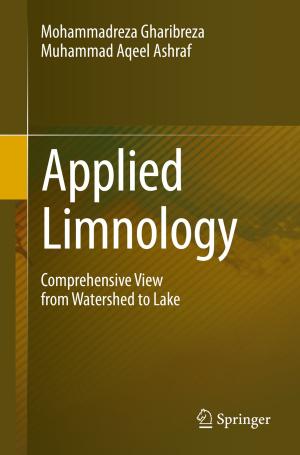THz Technology Applied to Cultural Heritage in Practice
Nonfiction, Science & Nature, Technology, Lasers, Material Science| Author: | Kaori Fukunaga | ISBN: | 9784431558859 |
| Publisher: | Springer Japan | Publication: | July 4, 2016 |
| Imprint: | Springer | Language: | English |
| Author: | Kaori Fukunaga |
| ISBN: | 9784431558859 |
| Publisher: | Springer Japan |
| Publication: | July 4, 2016 |
| Imprint: | Springer |
| Language: | English |
This book describes the current, concrete status of terahertz (THz) technology applied to scientific diagnoses of cultural heritage objects for conservation planning as well as for historical interest. It is unlike other THz-related scientific books in optics series, which only describe technologies and the physics behind them. A new method utilizing THz technology is introduced, which will help conservators and historians to analyse art objects at their museums. By using pulse echoes, THz imaging can noninvasively show internal structures such as layers in paintings and internal defects or additional pieces in objects. The biggest advantage of THz technology in heritage science is that THz waves can reveal the condition of preparation layers and supports of paintings that cannot be observed by other nondestructive testing methods, such as infrared (IR) or X-ray radiography. The condition of supports and preparation layers determine the lifetime of the paintings, so that their condition is the key factor for conservation planning.
The comparison with existing classic methods for scientific analyses is extremely important in the context of introducing new technologies in any research field, since most conservators and heritage scientists have their own protocols for classic methods. This book compares THz results not only with visible cross sections obtained using destructive methods, but also mid-IR, near IR, UV, X-ray, and nuclear magnetic resonance(NMR), which are considered to be nondestructive methods.
The book suggests future work that can be done by THz specialists, especially concerning the development of THz cameras, and by engineers and scientists in other fields, such as signal processing and chemistry, as well as by conservators.
This book describes the current, concrete status of terahertz (THz) technology applied to scientific diagnoses of cultural heritage objects for conservation planning as well as for historical interest. It is unlike other THz-related scientific books in optics series, which only describe technologies and the physics behind them. A new method utilizing THz technology is introduced, which will help conservators and historians to analyse art objects at their museums. By using pulse echoes, THz imaging can noninvasively show internal structures such as layers in paintings and internal defects or additional pieces in objects. The biggest advantage of THz technology in heritage science is that THz waves can reveal the condition of preparation layers and supports of paintings that cannot be observed by other nondestructive testing methods, such as infrared (IR) or X-ray radiography. The condition of supports and preparation layers determine the lifetime of the paintings, so that their condition is the key factor for conservation planning.
The comparison with existing classic methods for scientific analyses is extremely important in the context of introducing new technologies in any research field, since most conservators and heritage scientists have their own protocols for classic methods. This book compares THz results not only with visible cross sections obtained using destructive methods, but also mid-IR, near IR, UV, X-ray, and nuclear magnetic resonance(NMR), which are considered to be nondestructive methods.
The book suggests future work that can be done by THz specialists, especially concerning the development of THz cameras, and by engineers and scientists in other fields, such as signal processing and chemistry, as well as by conservators.















